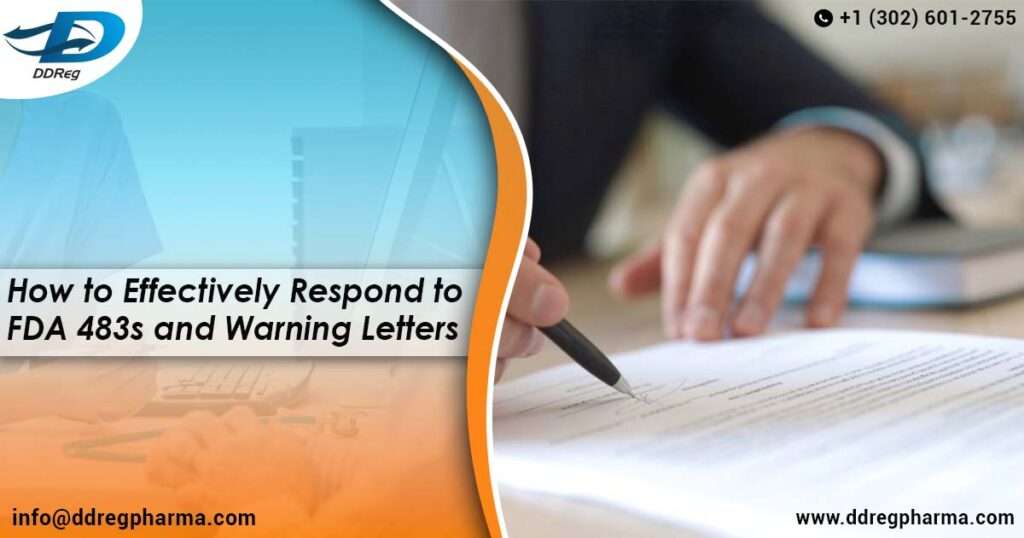For companies in regulated industries like pharmaceuticals, biotechnology, and medical devices, regulatory inspections are an integral part of operations. An FDA inspection may feel daunting, but it’s a critical mechanism to ensure compliance with standards (such as Good Manufacturing Practices) to safeguard public health and safety. When compliance gaps are identified, the FDA communicates its findings through FDA Form 483 or Warning Letters, signaling the need for immediate attention and corrective action.
Receiving these notices can be alarming, but they also present an opportunity for organizations to strengthen their systems and processes. How a company responds can make a significant difference in maintaining market access, regulatory trust, and operational continuity. Explore how to respond to 483s and Warning Letters efficiently.
Classification of FDA Inspection Outcomes
When FDA investigators evaluate your facility, their findings determine the facility’s compliance status, classified into three categories:
- No Action Indicated: No violations of regulatory significance were observed. No further actions are required.
- Voluntary Action Indicated: Minor issues are identified, but they don’t demand immediate action. Companies are encouraged to voluntarily address these concerns.
- Official Action Indicated: Serious violations are uncovered, warranting regulatory or administrative actions like warning letters or enforcement measures.
What is FDA Form 483?
An FDA Form 483 is issued when an inspection reveals conditions or practices that do not comply with the Food, Drug, and Cosmetic Act (FD&C Act). These observations serve as a roadmap for corrective actions. Each observation is detailed, pointing out specific areas where the standards weren’t met. Along with the Establishment Inspection Report (EIR)—a comprehensive inspection record—Form 483 provides the foundation for the FDA’s next steps. While receiving a Form 483 is not a final judgment, ignoring it can escalate issues, leading to warning letters or other regulatory actions.
What is a FDA Warning Letter?
A Warning Letter is issued when the FDA finds significant violations or deems a company’s response to a Form 483 inadequate. It formally outlines non-compliance, like poor manufacturing practices, misleading product claims, inaccurate or incomplete labeling and directions for use. The stakes are higher with a warning letter, as it requires a written response within 15 business days. Failure to respond appropriately can result in severe consequences, including product seizures, fines, or injunctions.
How to Respond to FDA Form 483 or Warning Letter?
Step 1: Do not Panic
FDA observations are an opportunity to rectify issues before they can escalate. Review the findings with your team to identify the root cause of all the observations.
Step 2: Review and Clarify
Start by carefully analyzing the Form 483 or warning letter and ask clarifying questions during the closing discussion of the inspection to ensure that you fully understand the FDA’s concerns. It is important to document the meeting thoroughly to capture any verbal clarifications.
Step 3: Respond Within 15 Days
The written response should acknowledge the receipt of the observations pointed out by FDA. Include a detailed plan for corrective and preventive actions with evidence-backed timelines for implementation.
Structuring Your Response
A clear and organized response should be drafted to address FDA 483 observations or Warning Letters. A structured approach not only demonstrates your commitment to compliance but also ensures your response is thorough and actionable. Here’s a recommended framework to guide your reply effectively.
- Cover Letter
The cover letter serves as the introduction to your response. It should acknowledge the FDA’s observations respectfully and concisely. Use this opportunity to underscore the organization’s commitment to resolving the issues raised, emphasizing the involvement of senior leadership in driving corrective actions. Also, provide contact details for the individual accountable for coordinating the response to facilitate direct communication with the FDA.
- Body of the Response
The main content of your response should address each observation systematically. Begin by quoting the FDA’s observation word for word to ensure clarity and alignment. Follow this by detailing your resolution plan, which includes a root cause analysis, the specific corrective and preventive actions to be taken, and the expected timeline for completion. The response should demonstrate that you have not only identified the problem but also have a strong plan to prevent recurrence.
- Supporting Attachments
Include relevant documentation, such as updated Standard Operating Procedures (SOPs), employee training records, and corrective action plans. These attachments should be meticulously organized and cross-referenced in the main response for easy navigation. A well-documented set of attachments strengthen your organization’s commitment to transparency and compliance.
By following this structured format, you can ensure that your response is professional, thorough, and aligned with the FDA’s expectations, laying the groundwork for a swift resolution and stronger compliance posture.
Action Plan for Corrective Actions
A quick fix may address the immediate issue, but lasting compliance requires a systemic approach:
- Root Cause Analysis: Dig deeper into the underlying problems, whether related to training, processes, or systems.
- Corrective Actions: Implement changes to resolve the identified issues.
- Preventive Actions: Strengthen safeguards to prevent recurrence.
- Monitoring: Verify the effectiveness of corrective measures over time.
Conclusion
Form 483 Observations and Warning Letters provide an opportunity to demonstrate your organization’s dedication to compliance, product quality, and public safety. By responding quickly and effectively, you not only tackle the immediate issues but also build trust with regulators and stakeholders.
Staying compliant with regulatory standards goes beyond avoiding penalties, it’s about guaranteeing that the products you introduce to the market adhere to the highest standards of safety and effectiveness.
Contact us today for a consultation tailored to your needs. Read more from our experts on latest updates from FDA: FDA’s First Draft Guidance on Nonclinical Development of Oligonucleotides

